New from our friends at Leading Edge Strategies
Practical Airport Operations, Safety and Emergency Management: Protocols for Today and the Future
Now Available!
Practical Airport Operations, Safety, and Emergency Management: Protocols for Today and the Future focuses on the airport itself, not the aircraft, manufacturers, designers, or even the pilots. The book explores the safety of what’s been called ‘the most expensive piece of pavement in any city’- the facility that operates, maintains, and ensures the safety of millions of air passengers every year. Available at Elsevier, Amazon and Barnes & Noble! 
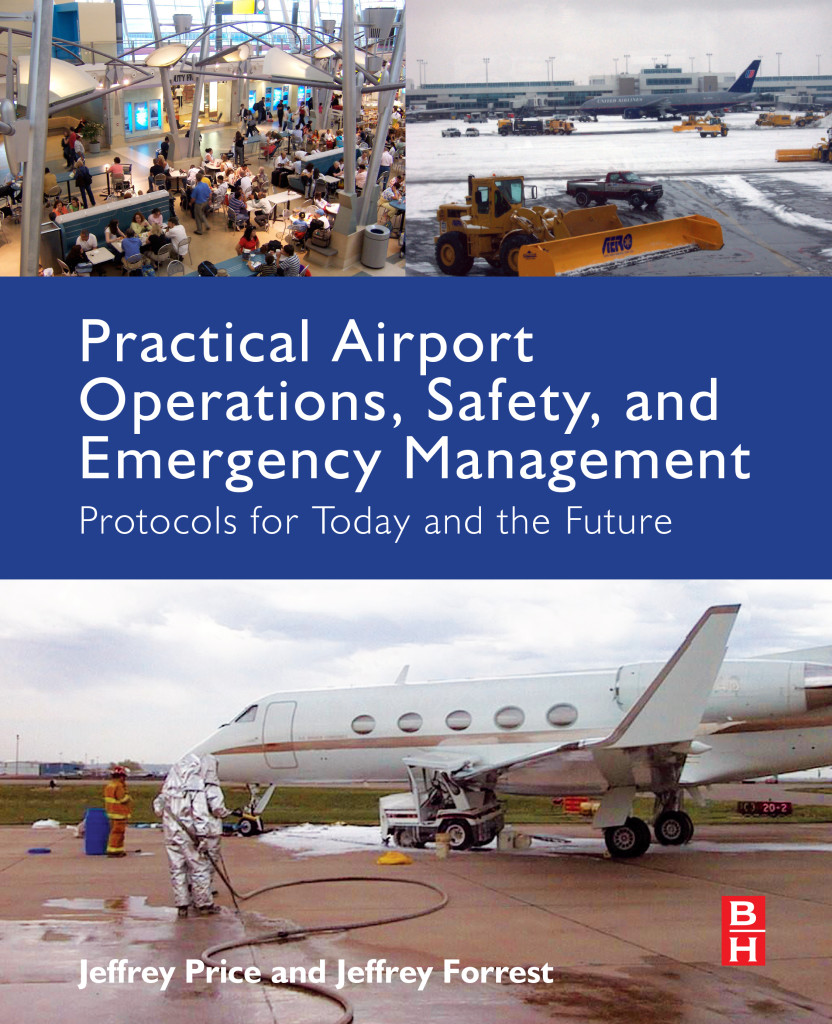
While the earning and recording of flight hours and maintenance history is important, keeping them safe and secure is invaluable. The new Master Logbook Case from ASA protects and stores those irreplaceable records.

The main compartment will hold logbooks up to 6-1/2 inches x 11 inches. A second interior pocket provides a place to hold documents or aeronautical charts, while four clear vinyl pockets allow storage of pilot certificates, medical certificates, credit cards and other smaller paper or plastic items.
An elastic loop on the inside will hold a pen or slim flashlight. The hook and loop closure system keeps contents secure and a contrasting blue inner lining makes it easy to find items inside, ASA officials note.

Price: $22.95.
The majority of general aviation aircraft use what’s referred to as a reciprocating engine. Mechanical energy is created through the back and forth movement (hence the name reciprocating) of pistons located in each cylinder which in turn drive a crankshaft that is directly connected to the propeller creating the required thrust. In the figure below you can see the major components of your typical reciprocating engine.
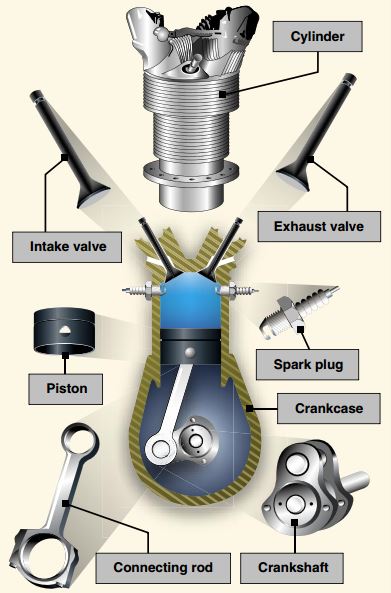
Major Components
A spark ignition four-stroke piston engine is the most common variant of the reciprocating engine that you will find in training aircraft. Four-stroke refers to a complete engine cycle, all four stokes must be accomplished in order to turn chemical energy (fuel) into mechanical energy (thrust). The four strokes are: Intake, Compression, Power, and Exhaust.
INTAKE
As the piston starts a downward travel it allows the intake valve to open inducing the fuel and air mixture into the top of the cylinder. You can essentially think of this as the piston sucking in the fuel/air mixture.
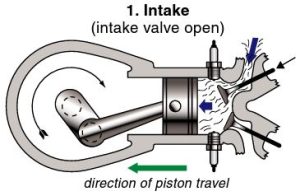
COMPRESSION
As the piston begins it journey back upwards the intake valves close and the piston compresses the fuel and air mixture in the cylinder. This increases the pressure and temperature of the mixture which will in turn create a higher energy output in the next step.
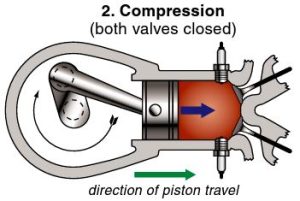
POWER
The now compressed fuel/air mixture is ignited by the spark plugs causing a controlled burning in the cylinder. The burning creates an enormous increase in pressure abruptly forcing the piston back in a downwards motion. This is what creates the immense power to turn the crankshaft.
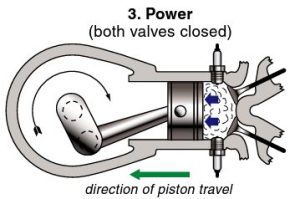
EXHAUST
This final stroke is used to purge the cylinder of the burned gasses within. As the piston begins its final journey back upwards to the cylinder head the exhaust valve opens allowing the burned gasses to escape out of the cylinder.
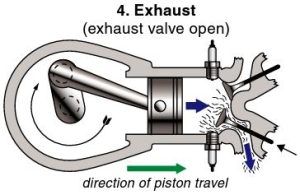
And the process begins all over again. To allow for smoother operation and continuous power output the engine contains a number of cylinders where the above cycle takes place. The power stroke of each cylinder is timed to occur at different positions then the others; therefore not every cylinder is timed where the power stroke occurs at the same moment. As the transfer of power is more evenly spread out the engine is much more capable of running smoother with less vibration.
Simply put, we tell you exactly who is hiring and where - right now!
Avjobs.com is a resource that brings together employers and employees in the aviation industry (Simply put, we tell you exactly who is hiring and where - right now!). Our Job Search System is for anyone looking for aviation related industry employment at any level. Please visit our website for additional Aviation Employment Assistance and information. You will need to visit our website and sign into the Applicant system, members.avjobs.com , to apply for positions. Please be aware that you will not be considered for any position until you have applied. Completing your master profile in our system will give you additional visibility and ensure your resume and interest remain active and visible to our recruiters.
Please visit members.avjobs.com
Get a summary of the best new aviation jobs, every week.
https://www.avjobs.com/preferences/newsletter.asp
Grant Aviation Inc is hiring in King Salmon and Anchorage Alaska.
Visit us to learn more about Grant Aviation Inc and see our job postings.
https://www.avjobs.com/directory/view.asp?Company=Grant+Aviation+Inc&g=994FD40F-44E7-44F9-B648-2677A8965058
See aviation career details and job information for Grant Aviation Inc on www.avjobs.com
Station Manager - King Salmon, AK
Licensed A & P Mechanic - Anchorage, AK
Avionics Technician - Anchorage, AK
Pilot In Command - Anchorage, AK
Maintenance Controller - Anchorage, AK
Pic - Anchorage, AK
View Grant Aviation Inc Company page